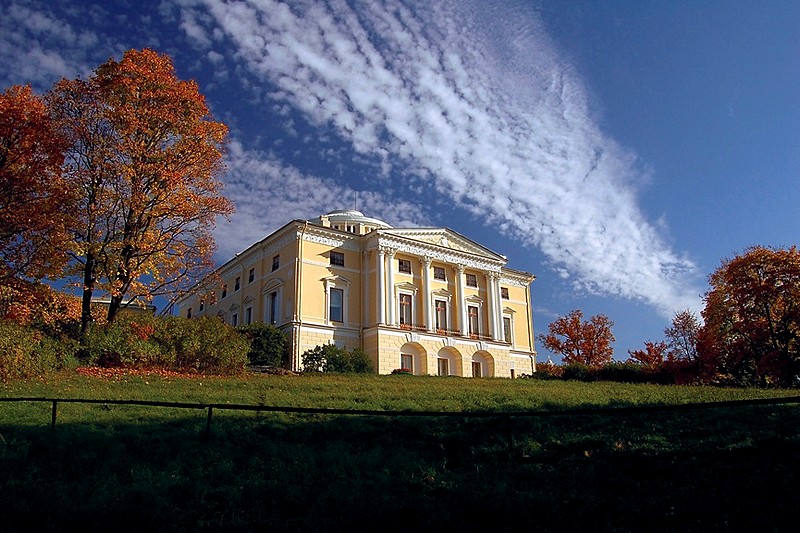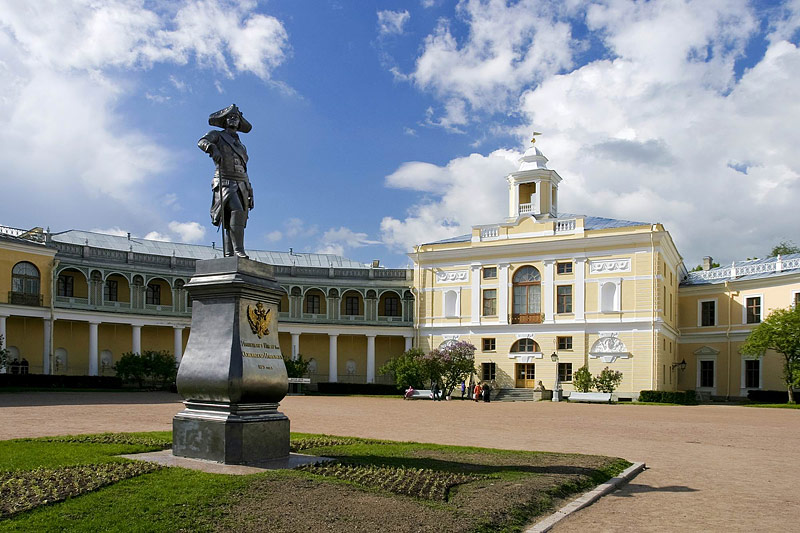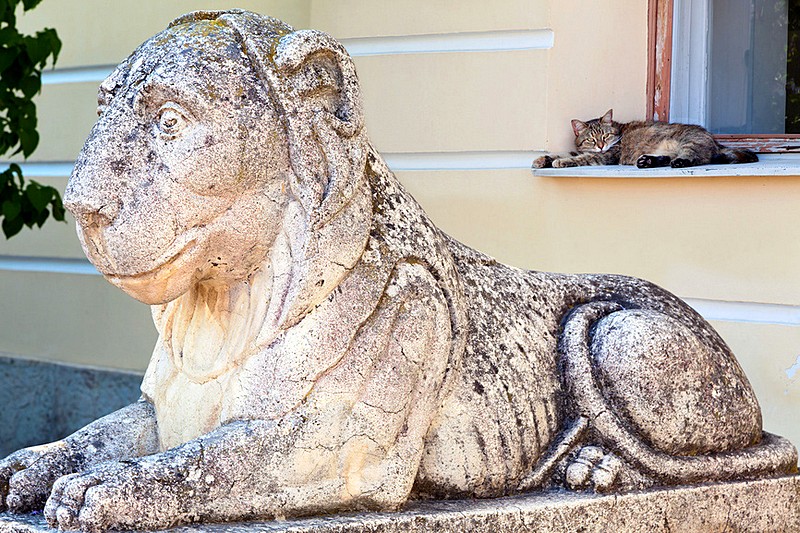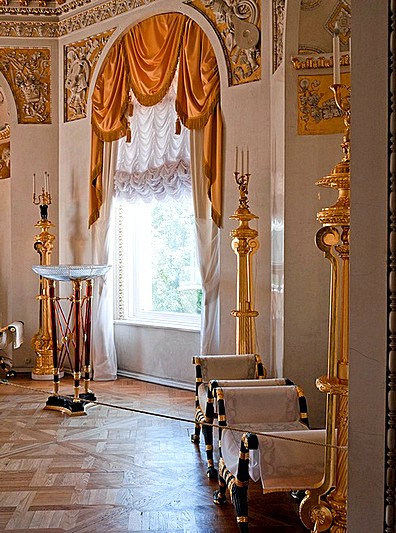Pavlovsk Palace
That the palace achieved such a harmonious facade belies the fact that it was conceived as a much smaller building, with the design expanded and embellished during construction. The task of designing the palace was originally assigned by Catherine the Great to Charles Cameron, the Scottish-born architect who had won the Empress's lasting favour with the work he did at Tsarskoe Selo. Construction began in 1782, but Cameron's modest design and his penchant for the absolute simplicity of Palladianism and the historical purity of Adamesque were not to the liking of Pavel and his wife Maria Feodorovna, and they charged Cameron's assistant, Vincenzo Brenna, with the task of extending the palace and creating a more imposing and regal building. Brenna quickly became Pavel's favourite architect, and went on to design alterations on the palace at Gatchina, and the Mikhailovsky Castle in St. Petersburg. His great achievement, both there and at Pavlovsk, was to combine the future Tsar's eclectic tastes into an organic and harmonious architectural solution.

Brenna's main addition to the original design was to build sweeping curved wings that make the entire structure almost circular. Designed to be seen from the eastern approach, the wings form a courtyard with a statue of Pavel directly in front of the squat central block. On the ground floor, the wings are a classical colonnade, with niches holding busts between the Doric columns. The floor above, however, is an Italianate latticed arcade. The wings lead to simple square pavilions at either end, and the effect is almost Baroque. The central block, however, is austerely neoclassical. While the lower floor is rusticated, with a row of simple arched windows and two niches containing bronze statues, the upper two storeys are decorated with four pairs of large Corinthian columns stretching up to a Pompeian cornice. The whole is crowned by a large colonnaded drum supporting a copper dome.

Inside, the Palace is considerably more ornate, with state rooms designed by some of St. Petersburg's most famous architects, including Quarenghi, Rossi and Voronikhin, the first Russian-born architect to make a significant contribution to one of the Imperial palaces. The palace's interiors are dominated by themes from antiquity, and military motifs designed to please the bellicose Pavel. They include the Italian Hall, which rises up to the building's central dome, the ornate Grecian Hall, the Egyptian Vestibule, and the contrasting Hall of War, with gilded models of military items, and Hall of Peace, equally richly decorated, but with flowers and musical instruments. Also of interest is Maria Fedorovna's Library, with a beautiful parquet floor of twelve sorts of wood and elegant furniture designed by Voronikhin.
The southern wing of the Palace contains Pavlovsk's Picture Gallery, with several notable paintings from the 17th and 18th centuries, including works by Tiepolo, Salvatore Rosa, and Rubens, and the Throne Room, which was actually the Palace's main dining room, and contains a 606-piece Gold Dinner Service from the Imperial Porcelain Factory. The Hall of Knights and Imperial Chapel bear testament to Pavel's peculiar relationship with the church - although officially Orthodox, he always preferred the trappings of Catholicism, as can be seen from the lack of icons and the preponderance of statuary in the chapel. The Hall of Knights, meanwhile, was the reception room for the Maltese Chivalric Order of Knights, who fled Malta after Napoleon's invasion and found sanctuary in Russia. Pavel was particularly proud to become their Grand Master, despite the fact that his appointment could not be recognized by the Pope.
The northern wing of the Palace contains the Imperial family's private chambers, which are by turns elegant and cheerful, belying the bitter atmosphere of fear and resentment that reigned between Pavel, his wife, and their children.
| Open: | May 1 to October 31: Open daily, except the first Monday of each month, 10 am to 6 pm. Last admission is at 5 pm. November 1 to April 30: Open daily, except Friday, and the first Monday of each month. The museum reserves the right to open ONLY the State Rooms and close other exhibits on Public Holidays. |
|---|---|
| Admission: | Adult: RUB 500.00. Family (2 Adults + 1 Child): RUB 900.00. Family (2 Adults + 2 Child): RUB 1150.00. Photo: RUB 200.00 Video: RUB 300.00. Temporary exhibits: RUB 150.00 each |
| Photo and video: | Photo: RUB 200.00 Video: RUB 300.00 |
| Accessibility note: | Sorry, this museum is not wheelchair accessible. |




